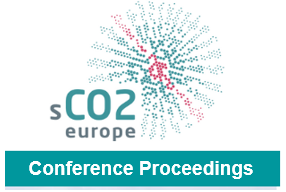Environmental assessment of a 25 MWe fossil-fired supercritical CO2 cycle
In a global effort to decrease human sourced Greenhouse Gas (GHG emissions, the operation of GHG emitting plants is only justified if they offer a sufficient flexibility to satisfy a highly variable net electric demand in electric grids with a significant share of intermittent renewable power plants. The EU funded project sCO2 Flex aims at designing a highly flexible 25 MWe supercritical CO 2 cycle s uitable for such a complementarity with renewable energies, and testing its main
components. However the performance of such a cycle should not be reached at the expense of its environmental impact. Therefore the present paper focuses on the analysis of the environmental impact of such a plant, following most of the guidelines of the Life Cycle Assessment (LCA) method, as described in the ISO 14040 14044 standards.
The assessment described in this paper was conducted on the open source software OpenLCA usi ng the database Ecoinvent, both acknowledged by the LCA community. It encompasses four major steps: goal and scope definition of the project, inventory analysis of the data, impact analysis and interpretation. Data was picked directly from the Ecoinvent database, gathered from the project’s contributors, or extrapolated from hypotheses if data was to be missing in the inventory analysis. To compensate the uncertainties due to lack of data on equipment scaling and operation practices, an extensive sensitivity analysis has been carried out to bring additional robustness to the study.
Considering the two impact categories selected in this paper (global warming potential at 100 years scope and abiotic resource depletion), the sCO2 Flex plant outperforms the reference water/steam plant for global warming potential thanks to its higher efficiency. This is however at the expense of a considerably higher abiotic resource depletion. Regarding the latter impact category, the most significant uncertainties arise from the amount of nickel based alloys used in the boiler.
Vorschau

Zitieren
Rechte
Nutzung und Vervielfältigung:
Dieses Werk kann unter einer Creative Commons Namensnennung 4.0 Lizenz (CC BY 4.0)
Creative Commons Namensnennung 4.0 Lizenz (CC BY 4.0)
genutzt werden.
